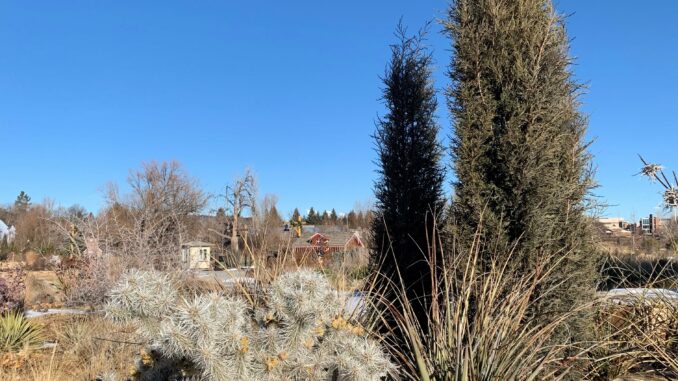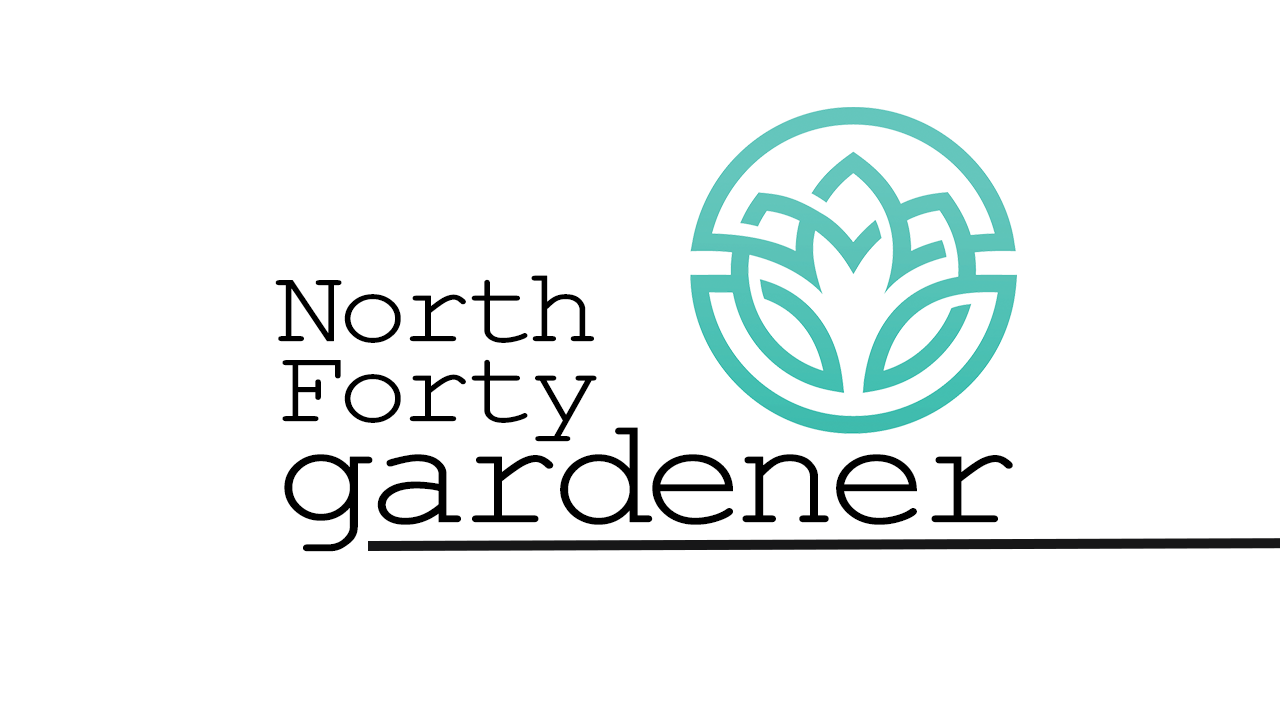

by Bryan Fischer, Curator and Horticulturist, Gardens on Spring Creek
Across the Front Range, yards are getting smaller. While the cause may be varied, one thing is sure: plant selections for our region are shrinking with our yards. While exuberant, vigorous, and downright blousy chloro-filled fare may have been the norm in decades past, horticulture these days is seeing a preponderance of dwarf and narrow plants hitting the market. As options grow, and – for many – the space to plant shrinks, plant selection is more impacted by the square foot than it’s ever been. So, expect a few articles discussing plant options for smaller yards. This week, I’ll provide an overview of columnar trees: ideal for small yards, tight spaces, and parkway strips, they are likely to be a more important feature of landscapes than ever before.
Speaking broadly, narrow trees come in two forms as selections from otherwise “normal” shaped trees: fastigiate (fast-idj-it) and columnar. Fastigiate trees are of intermediate width and teardrop shape that is wider at the bottom than the top. Columnar trees are the narrowest option, presenting nearly the same diameter at the bottom of the tree as they do at the top (like a Greco-Roman column). It’s worth understanding each of these terms and that trees with a single central leader (growing stem) often weather our heavy spring snows best. Since columnar trees often have multiple central leads competing to provide their form, this gives fastigiate trees the upper hand over many columnar trees in longevity for our climate.
Among the most popular options, narrow conifers make excellent backdrops, bed anchors, and visual screens year-round. Regionally appropriate taxa here include Juniperus virginiana ‘Taylor’ (15+ feet tall, three feet wide) and Juniperus scopulorum ‘Woodward’ (similar dimensions to the former). While less prone to storm damage than most columnar trees due to better single leads, both ‘Taylor’ and ‘Woodward’ benefit from winter pruning every few years to retain a single central leader. It is worth noting that ‘Taylor’ will brown a bit in winter like most eastern red cedar, recoloring green in spring; ‘Woodward’ retains most of its green-blue color.
Pinus heldreichii, or Bosnian pine, which offers a variety of fastigiate forms (roughly 20 feet tall and 10 feet wide), all with long, dark green needles, is a great option for spaces requiring a wider tree. Less often seen, Pinus cembra ‘Chalet’ offers one of the best narrow pines on the market: a fastigiate tree with long, white-edged needles on a tough tree presenting with a single leader. It can be hard to find but is worth the hunt. I would recommend avoiding ‘Arnold Sentinel’ Austrian pine (Pinus nigra) and ‘Skyrocket’ juniper (Juniperus scopulorum), both of which are quite prone to snow damage.
As appealing as ‘Chalet’ and a bit easier to find, a few fastigiate forms of Colorado blue spruce can also be found on the market. Growing to about five feet wide and up to 20 feet tall, these rugged and handsome trees make excellent landscape plants with numerous short, blue needles. My only real gripe with the plants would be that they, like most spruce, have root systems that draw more water from surrounding the soils than most other conifers I grow. At the nursery, you’ll likely find these labeled Picea pungens ‘Iseli fastigiate’ or ‘Fastigiata’.
While conifers might be the most diverse group of columnar plants in our region horticulturally, other deciduous trees and narrow, tree-like shrubs are also valuable additions to our landscapes. Watch for a future piece highlighting a few of the best narrow, deciduous woody plants for the Front Range region.
Support Northern Colorado Journalism
Show your support for North Forty News by helping us produce more content. It's a kind and simple gesture that will help us continue to bring more content to you.
BONUS - Donors get a link in their receipt to sign up for our once-per-week instant text messaging alert. Get your e-copy of North Forty News the moment it is released!
Click to Donate